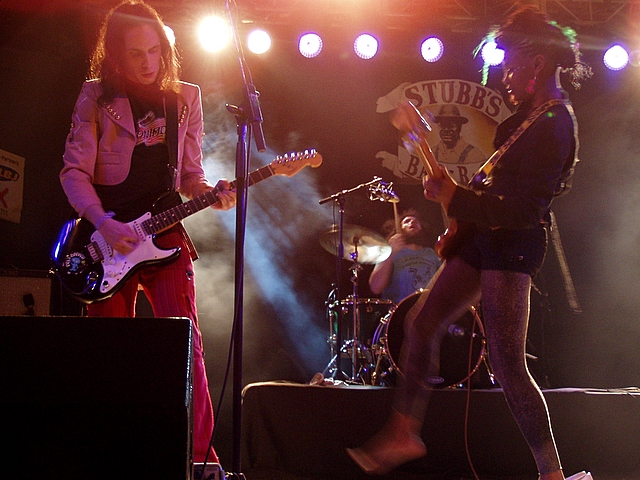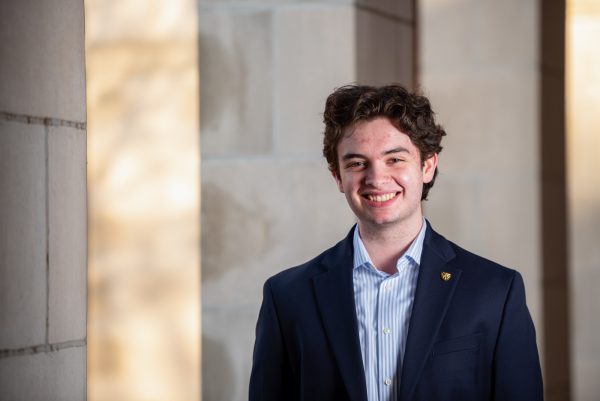Conceptualizing Indie Sleaze
The niche, New York social scene has made a comeback among anxious zoomers
OLYMPUS DIGITAL CAMERA
January 30, 2023
The flash from a low-megapixel, compact digital camera parts the room. The cramped, lower Manhattan apartment is abuzz with hipsters and undergraduate students socializing to the tune of the newest The Strokes album, “Room On Fire.” (You bought a CD of it over at Other Music on the way to the party.)
It has been two years since the planes hit the World Trade Center, but the feeling of pervasive emergency never stopped. The economy is busted, kids from your hometown are in Iraq and the government is probably spying on you. What is left for us to do but go to that new club in Williamsburg (rumor has it James Murphy is on deck tonight) and dance the night away?
Despite the many niche idiosyncrasies described in the above scene, this post-yuppie party atmosphere can be captured with one all-encompassing phrase: indie sleaze.
Born from a blossoming post-9/11 New York City music scene, the aesthetic is often discussed in tandem with the early 2000s “hipster” ideal: beards, gentrification, espresso, Brooklyn, the band Animal Collective, etc. I would suggest true indie sleaze lasted from 2001 to around 2011. Or, to conceptualize musically, from The Strokes to Vampire Weekend.
Little formal scholarship has analyzed this culture, but I suspect it’s because it’s hard to materialize. Indie sleaze is impressionism for a certain time and, importantly, place. It’s not as simple as how we often label things in terms of decades. Something just doesn’t look “indie sleaze” the way an outfit or object will look quintessentially “’80s” or “’90s.” When, where, who, the music, the visuals and the mood all are factors that create identifiable indie sleaze.
When? As established, from the early aughts to around 2011. Where? Largely this culture came from New York. Starting in lower Manhattan, it would later move into Williamsburg, Brooklyn, where it became ubiquitous.
Who? (This part is important.) The millennial generation are the ones most responsible for creating and perpetuating this aesthetic. Arguably, real-world trauma paired with financial instability drove them to alter their social world into something that became loose, apathetic and alternative — a sort of direct response to the buttoned-up yuppie young people of those who inhabited lower Manhattan before them.
The sound of indie sleaze could not be more crucial. It’s Yeah Yeah Yeahs, Electroclash, Jack White, LCD Soundsystem, the Moldy Peaches. It’s loud, driving and buzzy. Look to Lizzy Goodman’s excellent chronicle of the New York rock revival “Meet Me in The Bathroom” for a more robust examination of the music of this world.
This amalgam of culture is thoroughly defined by Instagram accounts like @indiesleaze which aestheticize this anxious period through mood-board Instagram posts and playlists for parties.
But the decade ended, Mike Bloomberg came to New York City and things began to change. The town became sanitized, polished. The aura of post-punk had been crushed by billowing condominiums and renovated brownstones. Like the New York of the ’60s — of Andy Warhol, Bob Dylan and Allen Ginsberg — it was long gone, lost to time.
However, in 2022, indie sleaze began to creep back into the Generation Z cultural consciousness. In October of that year, The New York Times devoted an entire article to covering a simple house party hosted by the trendy human interest blog “Perfectly Imperfect.” The newsletter, self-described as a “taste of someone else’s taste,” features prominent and interesting people who frequent the current New York young-people party scene.
Stars from “Euphoria,” musicians and writers detail what they’ve been up to and things they like in these curt, stylish newsletters. The “Perfectly imperfect” scene is beginning to look more and more like the indie sleaze days of yore. They even have their own electroclash outfit “The Dare,” whose viral single “Girls” is virtually indistinguishable from the early work of influential indie dance label DFA Records. So Generation Z has created their very own indie sleaze scene, but why?
My suspicion as a fellow “Gen Z-er” is that, like the millennials of 2001, they are also unsettled by national tragedy and state violence. So turning back to this free-spirited, semi-analog world is a natural reactionary response to the information age.
The revitalization of this aesthetic is fascinating because while some cultural relics from different decades have made material comebacks, think vinyl records,- we haven’t seen an era attempted to be so authentically emulated this much outside of a novelty context. In 2008, a digital camera wasn’t a rebellious artifact, but now seeing one at a party draws many eager glances.
One might argue that there’s a much larger Fukuyama-esque cultural question at play here. As The Strokes said, “Is This It?”, will Generation Z just ping-pong between different niche aesthetics until they grow up? Is contemporary culture just a push-and-pull between eras of the past? Maybe, but I think the answer is a lot more innocent. Generation Z is clinging to a world more familiar as this world becomes more unsettled and scary. Or even more simply, it might just be that, to many, doom-scrolling TikTok is no way to live.















